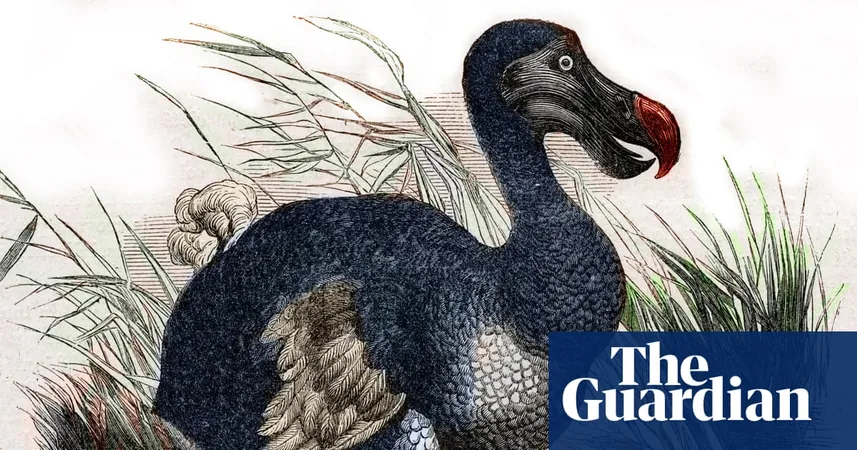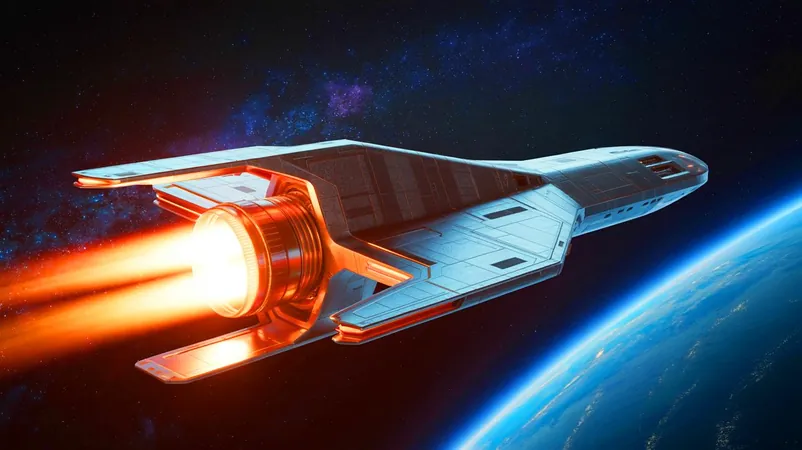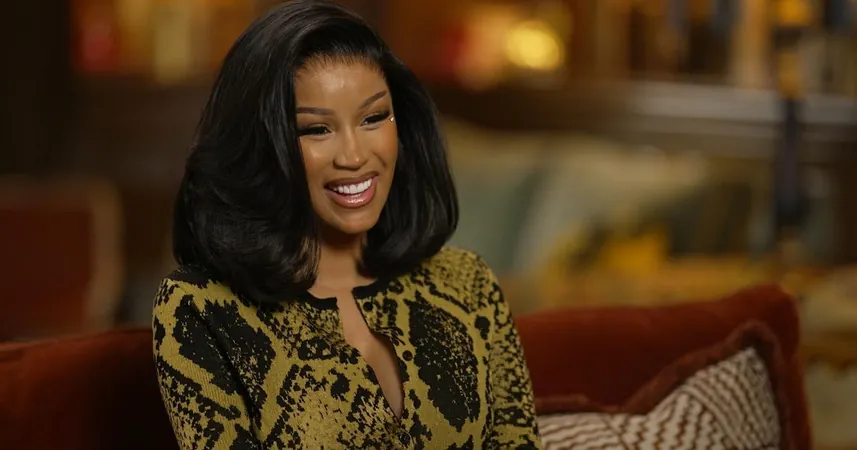
A Daring Leap Toward Reviving the Dodo: Scientists Bring Hope After 300 Years
2025-09-17
Author: Wai
The legendary dodo, long thought to be lost to history, may soon return to its native Mauritius, thanks to groundbreaking advancements from a Texas-based startup. Colossal Biosciences, known for its ambitious 'de-extinction' projects, has announced a significant breakthrough in their effort to resurrect the iconic flightless bird.
A Major Breakthrough in De-extinction Technology
On Wednesday, Colossal revealed it has successfully cultivated pigeon primordial germ cells—key building blocks for sperm and eggs. This innovative step is being hailed as pivotal in the quest to breathe life back into the dodo, a species that has been extinct for over 300 years.
The company has also introduced gene-edited chickens that will serve as surrogates for the dodo, allowing for the eventual breeding of these long-lost birds. By injecting these chickens with primordial germ cells from Nicobar pigeons—the dodo's closest living relative—and employing gene-editing tools, scientists aim to replicate vital traits of the dodo.
A Vision for Thousands of Dodos
Colossal's CEO, Ben Lamm, estimates that the first dodos could be roaming Mauritius within five to seven years, far sooner than earlier predictions. "Our goal is not just to create a couple of dodos but to establish enough genetic diversity to allow them to thrive in the wild," Lamm stated.
The dodo, a fruit-loving bird that once thrived without predators, faced extinction due to human activity and habitat destruction after European explorers arrived on the island. The last verified sighting occurred in 1662, when a Dutch sailor described the bird as a "kind of very big goose." Now, Colossal hopes to rewrite this tragic narrative.
Bringing Science Fiction Closer to Reality
Beth Shapiro, Colossal's scientific chief with a dodo tattoo proudly inked on her arm, shared how their year-long project was fraught with challenges, especially since birds present unique complexities compared to mammals. "This won’t be a simple process of releasing thousands of dodos into Mauritius overnight; it requires meticulous planning and execution," she explained.
The task is daunting, as experts raise questions about how accurately we can replicate the dodo's biology and behavioral traits. Evolutionary biologist Leonardo Campagna notes that while Colossal has made exciting progress, complete understanding of the dodo DNA remains elusive.
Skepticism Surrounds De-extinction Efforts
Despite the optimism, some environmentalists express concerns that efforts like this could shift focus away from the urgent need to protect currently endangered species. Rich Grenyer from Oxford University described de-extinction as a potential "dangerous distraction" that might allow humanity to overlook the real factors driving species extinction, such as habitat loss and climate change.
A Financial Surge Fueling Ambitious Goals
Colossal's recent announcement of an additional $120 million in funding, bringing the company's valuation to an impressive $10.2 billion, highlights the growing interest in de-extinction. High-profile investors, including celebrities like Tom Brady and Paris Hilton, have rallied around this pioneering venture.
As the company continues its remarkable journey, Lamm insists that their mission to resurrect extinct species must go hand-in-hand with conservation efforts. He likens their achievements to the groundbreaking cloning of Dolly the sheep, emphasizing the monumental significance of their work.
The Future of the Dodo: Uncertain Yet Hopeful
As for the dodo's future, Lamm remains upbeat despite the challenges ahead. "Whether people accept these engineered birds as true dodos or not, our work creates conversation and awareness around these important issues," he said.
From the shadows of extinction to the light of possibility, the dream of reviving the dodo has captured imaginations worldwide. Whether achieved or not, it raises significant questions about humanity’s role in preserving our planet’s biodiversity, balancing hope with responsibility.


 Brasil (PT)
Brasil (PT)
 Canada (EN)
Canada (EN)
 Chile (ES)
Chile (ES)
 Česko (CS)
Česko (CS)
 대한민국 (KO)
대한민국 (KO)
 España (ES)
España (ES)
 France (FR)
France (FR)
 Hong Kong (EN)
Hong Kong (EN)
 Italia (IT)
Italia (IT)
 日本 (JA)
日本 (JA)
 Magyarország (HU)
Magyarország (HU)
 Norge (NO)
Norge (NO)
 Polska (PL)
Polska (PL)
 Schweiz (DE)
Schweiz (DE)
 Singapore (EN)
Singapore (EN)
 Sverige (SV)
Sverige (SV)
 Suomi (FI)
Suomi (FI)
 Türkiye (TR)
Türkiye (TR)
 الإمارات العربية المتحدة (AR)
الإمارات العربية المتحدة (AR)